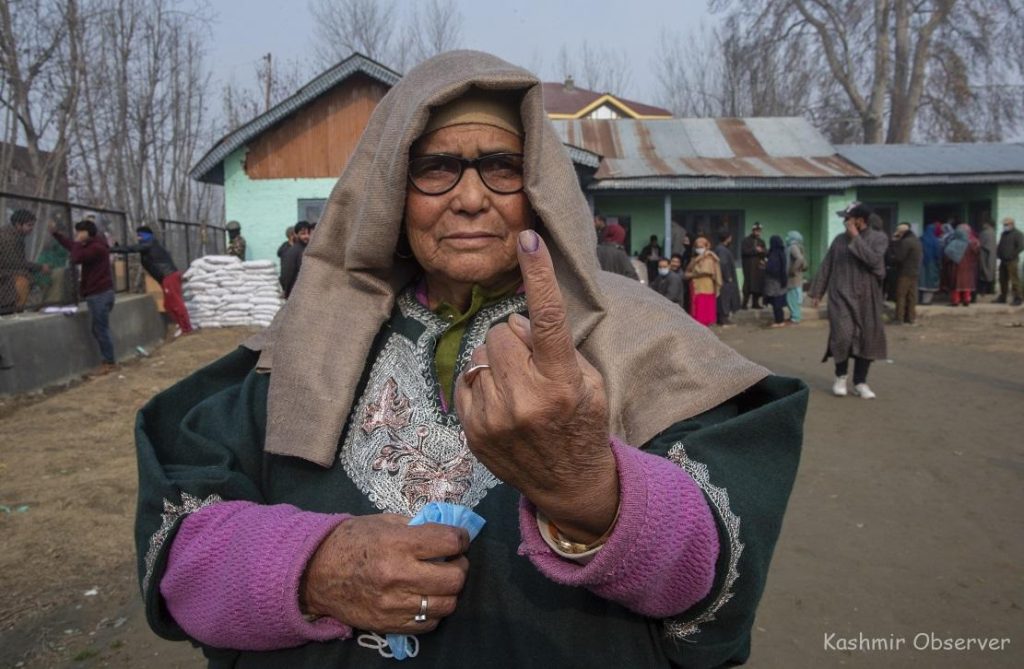
Finally, the Election Commission of India has announced Assembly elections in Jammu and Kashmir contrary to the expectations in the Valley that they might not take place. Over the past five years, both the central and the UT governments had exhibited little urgency to hold Assembly elections. All assurances to this effect turned out to be false. So, many people weren’t willing to believe until the polls were actually called on August 16. But, here we are. The union territory is going to polls after nearly a decade. For the first time since the advent of militancy in 1989, the people look forward to participating in the exercise. However, this approach to the exercise seems driven more by calculated pragmatism than genuine enthusiasm for the restoration of democracy. After five six years of a sterile bureaucratic rule, people want an administration that shows some feeling and is accountable for its actions. Even if only symbolically so, as the new elected government would be largely subservient to the Lieutenant Governor.
That said, the political scene in the UT since the abrogation of Article 370 in August 2019 has metamorphosed, yet stayed the same. Though the new political outfits like Apni Party led by Altaf Bukhari and the Democratic Progressive Azad Party (DPAP) are also in the fray, they haven’t made much of a mark so far, more so the latter. In the recently held Lok Sabha election, the parties sank without a trace. In contrast, beside the surprise victory of Engineer Rashid, the context in the Valley mainly revolved around the National Conference and the PDP. And this was telling. Essentially, the parliament election in Kashmir was a contest between the traditional mainstream political narrative and the new-fangled politics of the past five years. And it was decided in favour of the former.
In J&K, the old political order is represented by the National Conference and the PDP as well as the Congress party, which is a national party though. The BJP’s rise in the former state began after 2014 when for the first time it won 25 of 37 seats from Jammu division in the then Assembly elections. The BJP subsequently formed a coalition government with the PDP which secured 28 seats.
The new order is represented by the Apni Party led by the businessman-turned politician Altaf Bukhari, the DPAP headed by Ghulam Nabi Azad and the People’s Conference (PC) of Sajad Lone. Although the PC is an old party, its new avatar owes itself to the political restructuring of the Valley following the withdrawal of Article 370.
Though the NC looks apparently strong and PDP remains politically very much relevant, the parties have a work on hand to retain their centrality. This has become critical after the alliances they were a part of are no longer operational. The once-united opposition in the region under the umbrella of INDIA finds itself fractured and scrambling to maintain relevance. The fragmentation, coupled with the BJP’s strategic maneuvering, presents a formidable advantage for the saffron party.
Besides, the unraveling of the Peoples Alliance for Gupkar Declaration (PAGD), reflects the deep-seated divisions within the ranks of the mainstream parties. Originally formed with the lofty goal of advocating for the restoration of Article 370, the PAGD has devolved into little more than a memory, with its constituent parties failing to even convene, let alone pursue their shared objectives. The NC and the PDP, both integral members of the PAGD, have begun charting independent courses driven by their own political calculations – more so, the NC which was the first to announce its decision to go solo in the polls.
Going forward, it seems the NC holds an advantage, not so much due to the political ideology it promotes, but rather because of its widespread organizational structure. For example, its tame rhetoric on Article 370 faces a tough challenge from that of the PDP on the issue. PDP president Mehbooba Mufti has been peddling a hawkish narrative on the revocation of J&K’s special status.
The NC, on the other hand, has maintained a more diplomatic stance on the issue. In doing so, it not only expects to broaden its appeal across the religious and regional divide in the union territory, it also doesn’t want to antagonize the centre, which is hostile to a strident political demand for autonomy. Will adopting a political middle ground pay off for the party. The situation in the UT has become far too complex to lend itself to an easy prediction. If any proof was needed, it was provided by the surprise victory of Engineer Rashid. He polled nearly five lakh votes in Baramulla constituency, which makes his party a formidable challenger for the NC, the People’s Conference and the PDP not just in North Kashmir but also across the entire Valley. Should Rashid’s sons be able to work up the same emotion they did during the Lok Sabha election, they could pull off a major political upset. Upcoming Assembly election is thus full of interesting political possibilities. Let the action begin.
- Views expressed in the article are the author’s own and do not necessarily represent the editorial stance of Kashmir Observer
Follow this link to join our WhatsApp group: Join Now
Be Part of Quality Journalism |
Quality journalism takes a lot of time, money and hard work to produce and despite all the hardships we still do it. Our reporters and editors are working overtime in Kashmir and beyond to cover what you care about, break big stories, and expose injustices that can change lives. Today more people are reading Kashmir Observer than ever, but only a handful are paying while advertising revenues are falling fast. |
| ACT NOW |
| MONTHLY | Rs 100 | |
| YEARLY | Rs 1000 | |
| LIFETIME | Rs 10000 | |













